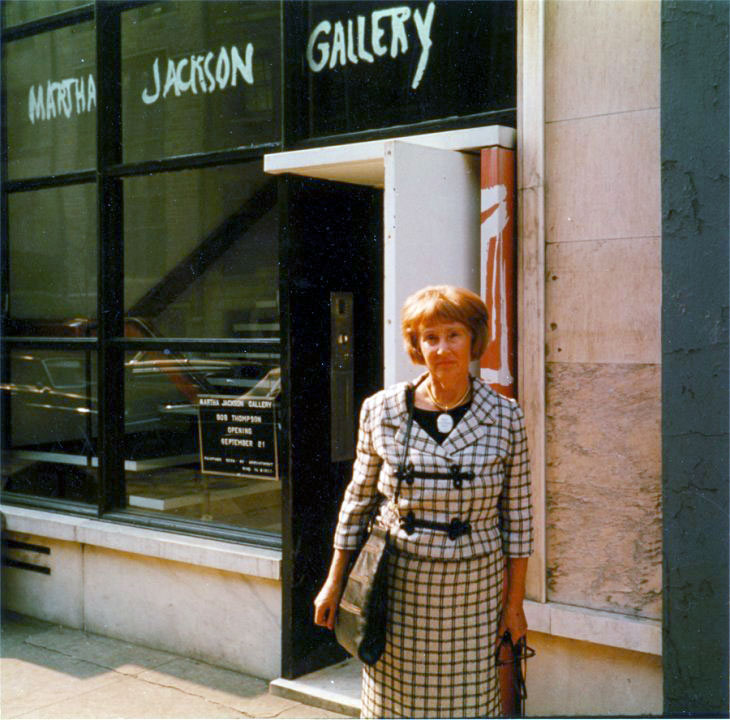Paths of Subtle Resistance: The Careers of Grace Hartigan, Joan Mitchell, and Martha Jackson
On March 23 Angelica Maier was to present a lecture Paths of Subtle Resistance: The Careers of Grace Hartigan, Joan Mitchell, and Martha Jackson at the Arthur Ross Gallery in coordination with the exhibition Frankenthaler on Paper. Due to COVID-19 this live event was cancelled. We are so grateful to Angelica for creating this revised content instead. Please enjoy these audio and image excepts here online.
Introduction by Angelica Maier
LIFE Magazine
“Women Artists in Ascendance, Young Group Reflects Lively Virtues of U.S. Painting,” LIFE Magazine, vol. 42, no. 19, May 13, 1957
Martha Jackson

Martha Jackson in front of her gallery in New York. Image courtesy of the UB Anderson Gallery. See this image and learn more about Martha Kellogg Jackson on the Albright-Knox website.
Joan Mitchell
 Joan Mitchell, Ode to Joy (A Poem by Frank O’Hara), 1970-1971. Oil on canvas, 100 1⁄2 x 197 1⁄4 in
(280.67 x 501.02 cm). Collection University at Buffalo Art Galleries, © Estate of Joan Mitchell.
Joan Mitchell, Ode to Joy (A Poem by Frank O’Hara), 1970-1971. Oil on canvas, 100 1⁄2 x 197 1⁄4 in
(280.67 x 501.02 cm). Collection University at Buffalo Art Galleries, © Estate of Joan Mitchell.
Grace Hartigan
 Grace Hartigan (American, 1922-2008). When the Raven Was White, 1969. oil on canvas,
support: 88 1/2 x 78 1/2 x 1 3/4 inches (224.79 x 199.39 x 4.45 cm). Collection Albright-Knox Art Gallery,
Buffalo, New York; The Martha Jackson Collection at the Albright-Knox Art Gallery, 1974 (1974:8.10).
© Estate of Grace Hartigan. Image courtesy of Albright-Knox Art Gallery.
Grace Hartigan (American, 1922-2008). When the Raven Was White, 1969. oil on canvas,
support: 88 1/2 x 78 1/2 x 1 3/4 inches (224.79 x 199.39 x 4.45 cm). Collection Albright-Knox Art Gallery,
Buffalo, New York; The Martha Jackson Collection at the Albright-Knox Art Gallery, 1974 (1974:8.10).
© Estate of Grace Hartigan. Image courtesy of Albright-Knox Art Gallery.
Bio
Angelica J. Maier is a PhD candidate in the department of Art History and holds a minor in Feminist and Critical Sexuality Studies from the department of Gender, Women, and Sexuality Studies (GWSS). Her research interests include feminist methodologies for art history, Critical Race Theory, materiality, and critical museum studies. Her interdisciplinary dissertation, “Toxic Matter: American Sculpture, Materials Science, and Cultural Fear, 1962-1979” is the first sustained examination of the intersections between artistic media, materials science, and toxicity. Through thematic chapters centered on lead, plastics, and gas—all media used in American sculpture by artists like Richard Serra, Eva Hesse, and Keith Sonnier—she re-situates artists’ aesthetic choices in relation to social concerns over class mobility and racial tensions, examines the discourse surrounding the toxicity of artistic materials, and connects their works to broader cultural fears and understandings of toxicity and materiality at the time.